Each month, we’ll be sharing the research and global adventures of one of our faculty members and/or students who have conducted research in his/her field of study, in our new blog series entitled: Global Research Series.
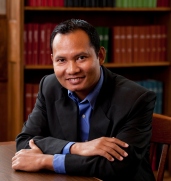
Dr. Gyanesh Lama took his research endeavors to a place he knows best – home. Nestled in the mountainous regions of the Himalayas, Nepal is home to 27 million individuals, including Lama’s own family.
Lama, an assistant professor in the Department of Social Work, spent seven weeks in Rhisyango, Tamangsaling, a village deep in the mountainside, northeast of Kathmandu in an area not far from Mount Everest. He set out to understand why poverty and inequality exists in Nepal. He battled torrential rain along the way – as the seasonal monsoon raged on for weeks during his research.
“Poverty is a major risk factor to population health and well-being, and an obstacle to society’s advancement,” said Lama. “Although poverty is a major social problem in Nepal, very little is known about its causes and consequences and the ways in which poverty is experienced and kept persistent.”
Lama found that of the over 60 ethnic and four caste groups in Nepal, the indigenous population (native Himalayans) are a majority of the population – and are also the poorest. This was due to what is known as institutionalized discrimination. In this case, it meant that villages where the natives were most widespread were mostly underdeveloped due to systematic isolation of these territories by the centralized government.
“This is something that has been going on for years,” Lama said. “Lack of self-governance appear to be the underlying causes of poverty among the indigenous groups in Nepal. “
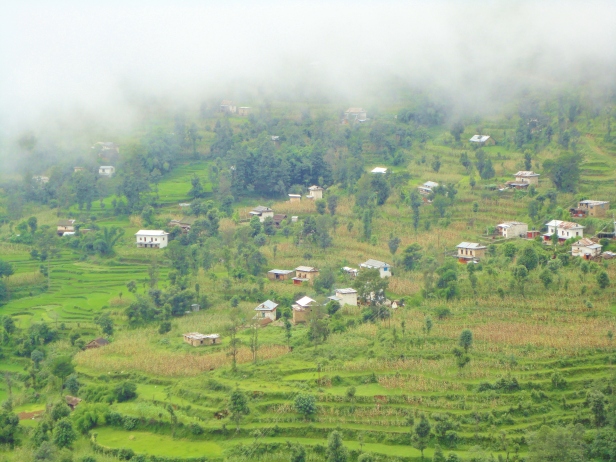
Nepal became a recognized republic in 2006. Prior to that, the country was ruled as a feudal kingdom by a non-native minority group, known as Chetri-Bahun. Over the years, many individuals from the lowland, what is now India-Bangladesh-Pakistan, migrated towards the Himalayas as refugees to escape criminal charges, overpopulation, conflicts and wars in the lowland.
This small group of non-natives, the Chetri-Bahun, made up less than 5% of the population of Nepal in 1950s – yet consequently run the country. Over time, population of this group grew exponentially, displacing the natives of the Himalayas, particularly in areas that are geo-politically strategic, such as Kathmandu. Today this group constitutes around 20% of the population and is rapidly growing.
The other 60-80% of the population are made up of the poor natives who live in the rural villages of the Himalayas. Through his findings, Lama determined that indigenous groups, particularly Tamang, Magar and Tharu, are the poorest of the poor in Nepal. These indigenous groups are also most vulnerable to human-trafficking and labor exploitation.

“Sadly, there’s always some groups that benefit from poverty of others. In Nepal, Chetri-Bahun regime uses poverty of the indigenous peoples as a front for extracting donations and loans from foreign donors. The revenue from donations and loans though rarely filters down to the poor. Through this money, they hold control of the government, political parties, military, NGOs, commerce and media. So the regime has interest in keeping certain section of the population always poor. In this sense, Chetri-Bahun regime is a poverty pimp of Nepal. These pimps will design laws and policies to protect their own interests over those of the larger societies. They won’t allow the indigenous peoples to self-determine their own future on their own land. They will exploit labors and resources of the indigenous land”, says Lama.
“Existence of these, i.e. poverty pimps, it seems, are the real reasons why many societies, including Nepal, can’t get out of poverty. They are like cancer to the society”.
Lama states it is unfortunate that these things exist in a county that is known as the birth place of the Buddha and land of spirituality. Most of the indigenous peoples are Buddhists or practice native cultures, while most of the caste people (Chetri, Bahun, Baishya, and Sudra) are Hindus who practice caste system, just as in India.
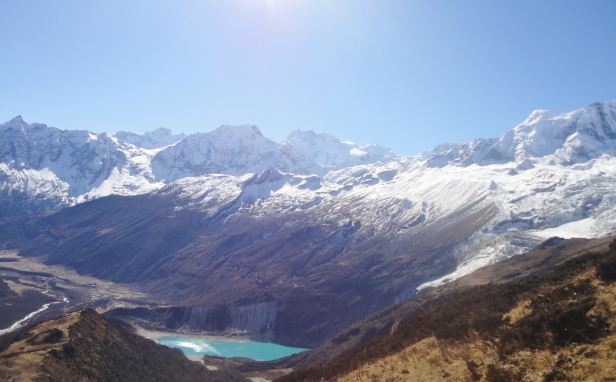
Lama hopes to expand on this research project in order to engage students in research opportunities, both locally and globally. He originally visited Nepal in 2010 for research purposes and later came back in the summer of 2011 and 2014 for follow-up studies.
The issue of poverty in Nepal is one that hits close to home for Lama. Coming from a poor family of indigenous roots, he knows firsthand the struggles of his people. However, education was always at the forefront of his family values – regardless of income.
“In America, education is mandatory,” Lama stated. “But in Nepal, education is a privilege.”
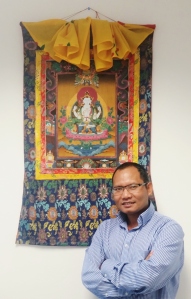
To pay for his way through secondary school and college, Lama would spend hours and weeks at a time hand painting intricate tapestries (known as Thangka), and work as a porter/Sherpa in trekking industry, popular in Nepal. His hard work paid off, as he went on to receive his bachelor’s degree in social work from St. Xavier’s college, Kathmandu University in 1996. He came to America in 1999 to obtain his master’s degree and a Ph.D., also in social work, from Washington University in St. Louis, Missouri.
He joined the faculty in Fresno State’s Department of Social Work in the fall of 2013.
Since then, Lama has taken a piece of home to his classroom, incorporating the practice of meditation into his everyday class routine. At the beginning of each Social Work 260 class, Lama has his students perform 5-10 minutes of relaxation and meditation.
Lama said his students were hesitant at first, but grew to enjoy it and embrace it as a part of their daily class ritual.
“Nepal is materially poor, but spiritually wealthy,” Lama stated. “I hope to show my students that clarity of mind and purity of hearts leads to building peace and better society.”
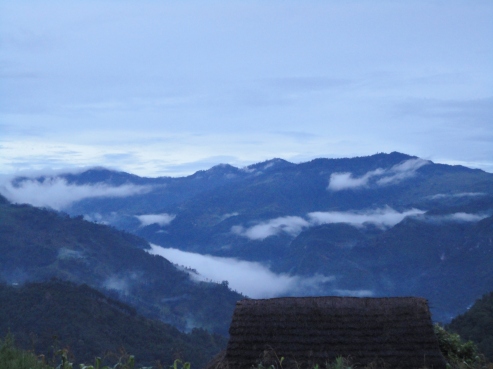
Other Projects
Lama is currently involved in other projects as well, including YouthSave, which aims to make financial services and savings-building tools accessible to low-income youth in Nepal, Colombia, Ghana and Kenya; and the Middle Class, which aims to expand the size of the middle class as an approach to building inclusive society. The projects are a collaborative partnership between the Center for Social Development and Center for New Institutional Social Sciences at Washington University (Lama’s alma mater). Locally, he is working on Mapping Poverty and Disparity project, which aims to document poverty issues here in the Central Valley, California.
To learn more about Lama’s research project in Nepal, you may contact him at glama@csufresno.edu.


Great article!!
LikeLike